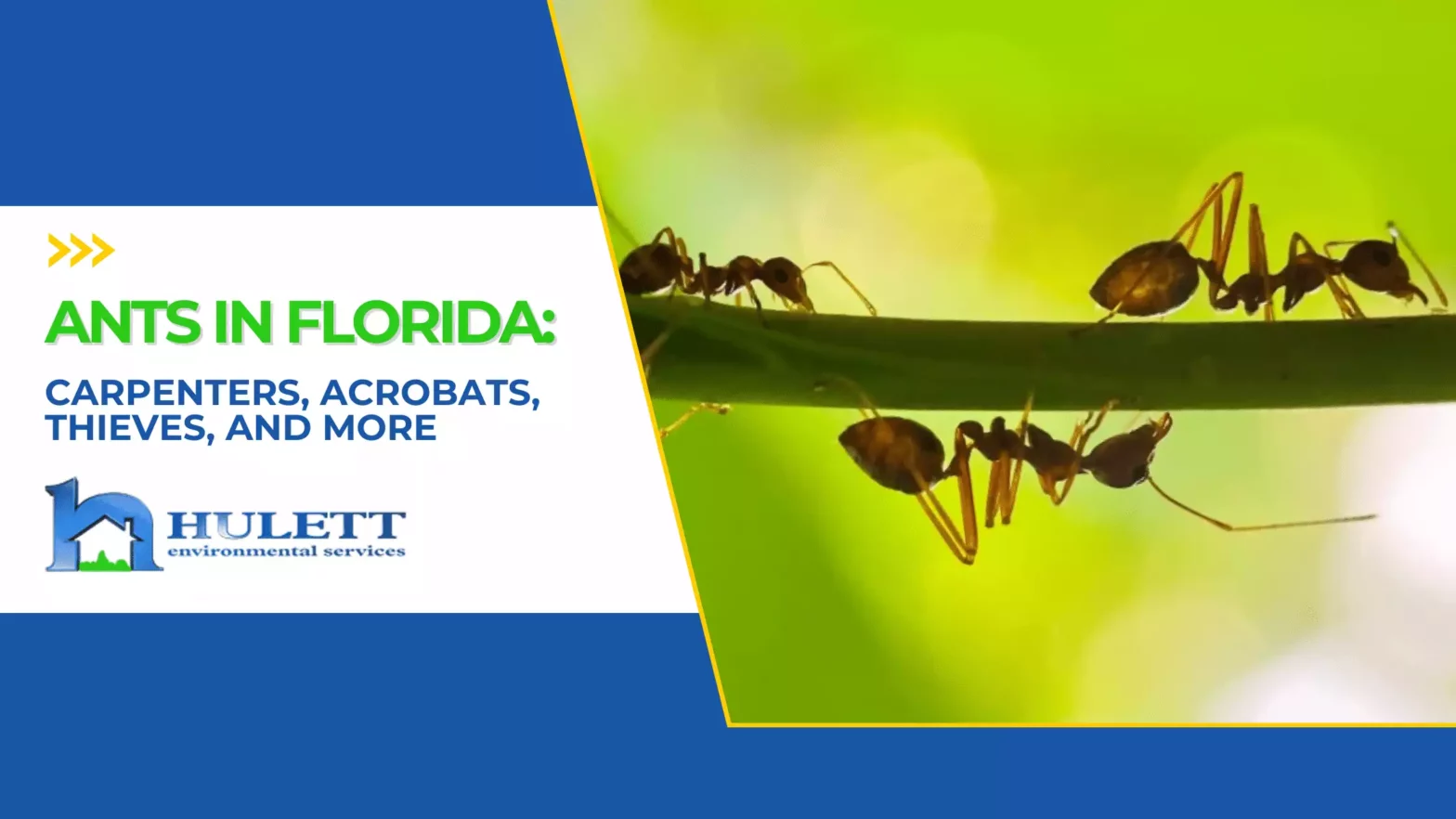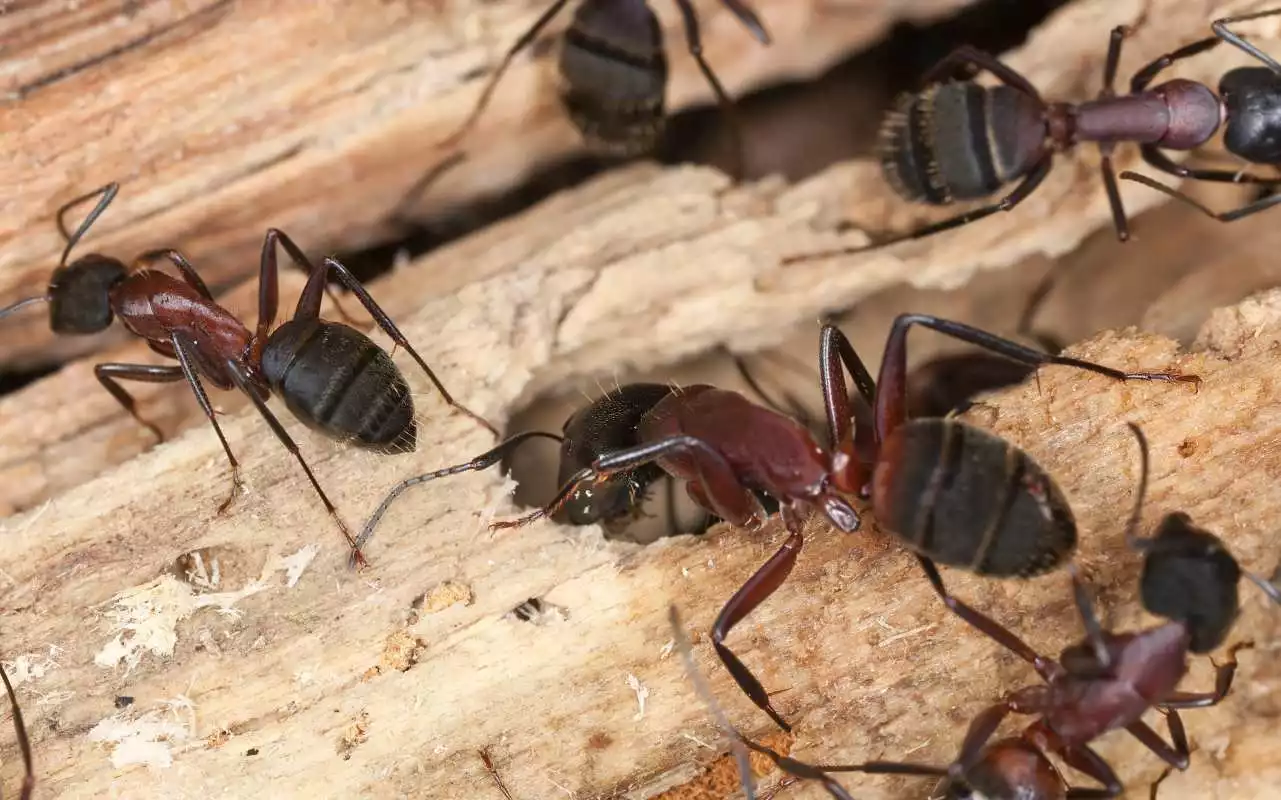
Ants in Florida: Carpenters, Acrobats, Thieves and More
Ants are as common in South Florida as tourists at a tiki bar, and it’s been that way for quite a long time.
Let’s start at the beginning. First appearing during the Jurassic period, ants are close relatives of bees, wasps, and hornets, which have roamed the Earth for well over 140 million years. In that time, they endured continental drift, ever-changing environmental conditions, and multiple extinction events, causing separate populations to evolve over millennia into over 12,000 distinct species.
Today, ants are the most populous creatures on the planet and inhabit nearly every landmass, with only a few exceptions, including the frigid islands of Iceland, Greenland, and Antarctica. The warm tropical climate of South Florida, however, presents the perfect environment for ants to explore, expand, and expeditiously infest your home.
What are Sugar Ants?

Before diving into the various ant species in Florida, let’s address the ambiguity surrounding “sugar ants” or “sweet ants.” This term is often used broadly in North America to describe ants that prefer sugary foods, namely the “Ghost Ant” or “White Footed Ant”. However, the true sugar ant, Camponotus consobrinus, primarily resides in Australia and is not found in Florida. Ghost Ants give South Floridians enough trouble. These tiny invaders are among the smallest ants and are notable for their pale, almost translucent bodies and invading kitchens and baths. Their small size allows them to infiltrate homes easily, making them a persistent nuisance.
Pavement Ants
Pavement ants are named for their tendency to build nests under sidewalks, driveways, and building foundations. These small, dark brown to black ants are about 1/16 to 1/8 inches long and are easily recognizable by the parallel lines on their heads and thoraxes.
Known for their aggressive behavior as they expand their territory in the summer months, these militaristic ants often engage in battles with other colonies, leading to iconic ant wars involving thousands of soldier ants on sidewalks. They’ll come in full force when they decide to colonize your home. You may not spot their scouts, which is a prelude to infestation, as you might with other species, so fast action is crucial. However, If you see mounds, excavated between driveways pavers, pool pavers, concrete in the sidewalk, or even your interior baseboards, this could be an indicator of “Big Headed Ant”.
Carpenter Ants
Carpenter ants are among the largest ants found in Florida, with workers ranging from 1/4 to a full inch in length. Highly destructive and difficult to spot while nesting, these ants are notorious for their ability to nest within wooden structures, both natural and artificial. Unlike termites, carpenter ants don’t consume wood but excavate it to create their nests, which could lead to costly repairs, especially since these ants are associated with water damage.
When you hear about “flying ants”, this might be used to describe carpenter ants, who are known to have large swarms of winged reproductive males and females, though they are only one of many examples of flying ants in Florida. Their wood-burrowing behavior and brief yearly flights mean they are often mistaken for termites.
They prefer moist, decayed wood but can also infest sound wood, foam insulation, and other building materials. Interestingly, carpenter ants prey on termites, but this does not make them helpful, as they can still be a major pest within your home.
How To Tell the Difference Between Carpenter Ants and Termites
Understanding the specific type of nuisance in your home guides every step in our pest control process. These two wood-burrowing pests can be easily misidentified, so keep an eye out for the unique characteristics that set them apart:
- Dark-colored bodies. Carpenter ants are typically darker than termites.
- Narrow waists. Carpenter ants have a more defined waist than termites’ more uniform body width.
- Bent antennae. Carpenter ants have bent or “elbowed” antennae, while termites have straight antennae.
- Hind wings shorter than front. In reproductive carpenter ants, the hind wings are shorter than the front wings, whereas termites have wings of equal length.
Fire Ants
The term “fire ant” is an example of a term encompassing various ant species, but the red imported fire ant, the Solenopsis invicta, was introduced to the United States in the 1930s, which is particularly problematic. These invasive ants are among the most common in Florida, thriving in its warm climate.
These highly coordinated ants build large, visible mounds in open spaces such as parks, wooded areas, and potentially your lawn. If you find fire ants on your property, keep your distance. Fire ant soldiers are highly aggressive and will swarm and sting anything that disturbs their nest, so just call Hulett for fire ant removal that keeps you out of harm’s way.
Oddball Ants You May See Occasionally
- Crazy ants. With large colonies that are difficult to remove, crazy ants get their name from their erratic and unpredictable movements. Watch for ants exhibiting fast, irregular running patterns in and around your home.
- Acrobat ants. Acrobat ants emit a foul odor when threatened and resemble carpenter ants in appearance. Unlike carpenter ants, acrobat ants are typically inactive during the day. They get their name from their ability to raise their abdomen over their thorax and head when threatened, resembling gymnasts.
- Thief ants. Also known as “grease ants,” they nest close to other ant colonies and steal their food. As their nickname implies, they are particularly attracted to greasy and oily foods, making them a common household pest.
The Best Ant Pest Control Near You
When ant infestations become overwhelming, reach out to the professionals. With over 50 years of experience, Hulett Environmental Services is southern Florida’s leading pest control specialist. We offer a range of services, including the Hulett Healthy Home Guarantee and Green Home Pest Prevention, offering you a people-, pet-, and environmentally friendly approach to pest control.
Schedule a free, no-obligation ant control inspection today. Our family-owned and operated business is QualityPro Certified and GreenPro Certified, ready to help you find relief from ants and other southern Florida pests.




